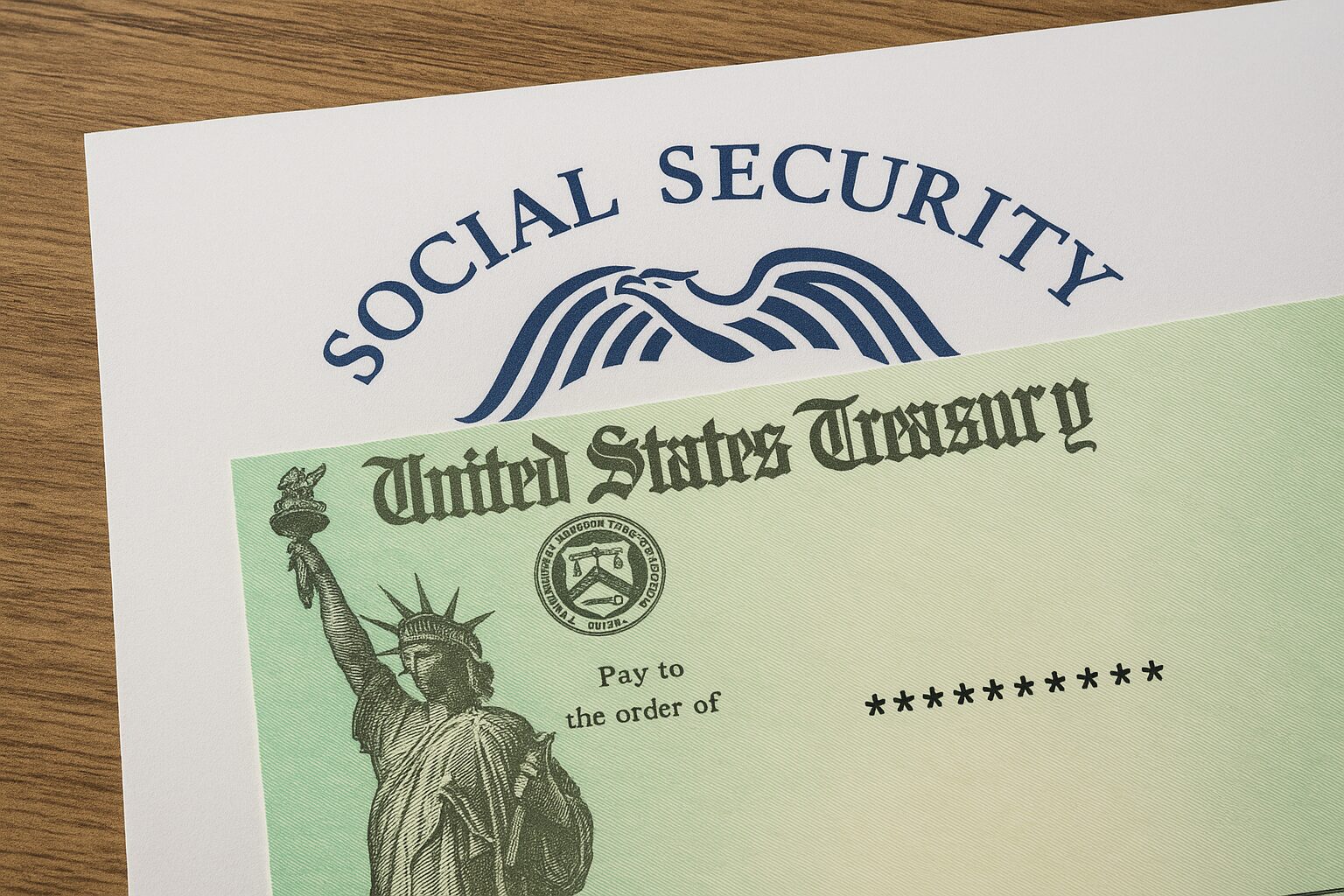For millions of Americans, Social Security is more than just a paycheck — it’s a financial lifeline. It helps retirees, disabled workers, and low-income individuals cover daily expenses, medical costs, and essentials. Lately, many are talking about extra money from Social Security this month, as several beneficiaries report receiving higher or unexpected payments in their accounts.
Recently, there’s been a lot of buzz about people getting extra money from Social Security this month. Some recipients noticed higher payments, while others received an unexpected deposit in their bank accounts.
If you’ve seen the same or simply want to understand what’s going on, this guide explains everything — who qualifies, why these extra payments happen, and how to claim yours if you’re eligible.
What Is the Extra Money from Social Security This Month?
First, let’s clear up a big misconception — there’s no random “bonus” or secret government payout. The extra money some people receive is usually part of official adjustments or corrections made by the Social Security Administration (SSA).
Common Reasons for Extra Social Security Payments
- COLA (Cost-of-Living Adjustment)
Every year, Social Security benefits are adjusted to match inflation. In 2025, the COLA is projected around 3.2%, meaning many beneficiaries are receiving slightly higher payments this month as part of that increase. - Retroactive or Delayed Payments
If your benefits were approved late or recalculated after missing payments, the SSA may send you retroactive pay — a lump sum to cover what you should’ve already received. - State Supplemental Benefits
Some states offer extra SSI (Supplemental Security Income) payments on top of the federal amount. These are often distributed mid-year or during specific months. - Recalculated Earnings or Tax Refunds
If you worked part-time, filed new income info, or had taxes withheld, you might receive an adjustment or refund added to your regular payment.
Common Myths
| Myth | Reality |
|---|---|
| Everyone gets a Social Security bonus this month. | False — only certain groups qualify for adjustments or back pay. |
| It’s a new government stimulus. | Not true — SSA doesn’t issue random “stimulus” payments. |
| You can apply for extra money through third-party sites. | Dangerous — only use SSA.gov. |
How Social Security Payments Work
To understand why some people receive extra Social Security money, it helps to know how payments are calculated and scheduled.
How SSA Calculates Monthly Benefits
Your benefit depends on:
- Your average indexed monthly earnings (AIME) over your career
- Your age when you start collecting benefits
- Whether you’re receiving spousal, survivor, or disability benefits
The SSA uses a formula to ensure higher lifetime earners get larger benefits, but lower earners still receive meaningful support.
Payment Schedules
| Type of Benefit | Typical Payment Date | Example |
|---|---|---|
| SSI | 1st of each month | Paid early if the 1st falls on a weekend or holiday |
| Retirement | 2nd–4th Wednesday | Based on your birthdate |
| SSDI (Disability) | Same as retirement | Depends on when you applied |
If two payments arrive close together (for example, due to a holiday adjustment), it may appear as “extra money” in your account.
How Income and Age Affect Your Benefits
- If you’re below full retirement age (66–67) and still working, your benefits may be temporarily reduced.
- After you reach full retirement age, there’s no limit on how much you can earn.
- Working additional years may increase your benefit since SSA recalculates based on your top-earning years.
The Importance of “My Social Security” Account
Create a My Social Security account to:
- Check payment details
- See annual COLA adjustments
- Review tax withholdings
- Track benefit history
Who Qualifies for the Extra Payment
Not everyone will get extra money from Social Security this month, but several categories of beneficiaries may.
1. Retirees
- Those who recently started receiving benefits might get catch-up COLA payments.
- Beneficiaries with corrected wage reports or late filings could receive retroactive adjustments.
2. Disability (SSDI) Recipients
- You might receive back pay if your disability claim was approved after months of processing.
- Delayed or miscalculated disability amounts can trigger lump-sum corrections.
3. SSI Beneficiaries
- Low-income or disabled individuals receiving Supplemental Security Income may get state supplements or mid-year adjustments.
- SSI is often adjusted automatically based on income and household size.
4. Eligibility Factors
- Age: Retirees over 62 or those reaching full retirement age
- Income: Those under income thresholds may qualify for SSI boosts
- Dependents: Spouses and children of retirees or disabled workers may receive additional payments
- Employment Status: New earnings can trigger recalculations
Scenarios Where You Might See Extra Money
- Payment overlap (end of one month + start of next)
- Retroactive approval for a delayed claim
- Correction after an SSA error or system update
How to Check If You’re Eligible
Wondering if you qualify for extra Social Security money this month? Here’s how to find out.
Step 1: Log In to SSA.gov
Visit www.ssa.gov and log into your My Social Security account.
Here you can:
- View recent payments
- Check your benefit type
- See official SSA messages or notices
Step 2: Review Your Benefit Letter
Each year, SSA sends an official COLA notice and benefit summary. Review it to confirm your monthly amount and see if it reflects a recent change.
Step 3: Compare Your Deposits
Compare last month’s payment with this month’s. If it’s higher, the reason may be listed in your SSA notice or your account’s message center.
Step 4: Contact SSA for Clarification
If you can’t find an explanation:
- Call: 1-800-772-1213
- Visit: Your local SSA office
- Online inquiry: Through your SSA account message portal
How to Claim Extra Social Security Money
If you believe you were underpaid or missed an adjustment, here’s how to claim it.
1. Gather Required Documents
You’ll need:
- Social Security Number (SSN)
- Proof of identity (driver’s license, passport)
- Recent bank statements or payment records
- Any SSA letters or notices
2. Submit Your Claim
You can:
- File online through your My Social Security account
- Call SSA at 1-800-772-1213
- Visit your nearest SSA office (schedule an appointment first)
3. Wait for SSA Review
Processing times can take 2 to 8 weeks depending on your case. Once approved, payments are deposited directly into your account.
Avoiding Scams and False Promises
Unfortunately, fraudsters take advantage of Social Security beneficiaries by promising fake “bonus” checks or offering to “speed up” payments.
Warning Signs of Scams
- Emails or calls claiming you’re eligible for a “Social Security bonus”
- Requests for payment or gift cards
- Fake SSA websites (always ensure it ends in .gov)
How to Protect Yourself
- Never share your Social Security Number or banking details over email or text.
- Verify any communication by contacting SSA directly.
- Report scams to the Office of the Inspector General at oig.ssa.gov.
Maximizing Your Social Security Income
Even if you’re not getting extra money this month, there are ways to increase your income safely and legally.
1. Delay Retirement
Each year you delay claiming benefits after full retirement age increases your payout — up to 32% more if you wait until age 70.
2. Work a Few Extra Years
SSA recalculates benefits based on your highest-earning 35 years. Working longer can replace lower-earning years with higher-income ones.
3. Coordinate Spousal Benefits
Couples can strategically time their claims to maximize total household income.
4. Manage Taxes and Withholdings
Opt to withhold federal taxes from your Social Security check to avoid surprises during tax season.
5. Supplement Income Responsibly
You can earn more by doing remote jobs, online surveys, or part-time work without exceeding SSA’s income limits.
Visuals & Statistics: Understanding the Numbers
Average Social Security Payments in 2025 (Estimates)
| Category | Average Monthly Payment |
|---|---|
| Retired Worker | $1,920 |
| Disabled Worker (SSDI) | $1,540 |
| SSI Recipient | $697 |
| Retiree with Spouse | $2,850 |
COLA Increases Over the Past 5 Years
(Illustrative Chart)
2021 – 1.3%
2022 – 5.9%
2023 – 8.7%
2024 – 3.2%
2025 – 3.2% (projected)
These increases directly affect why some recipients see “extra money” this month — often due to delayed or adjusted COLA payouts.
Top 3 Reasons You Might Receive Extra Money
- COLA adjustment applied late
- Retroactive approval or correction
- State supplemental benefit
FAQs
1. Why did I get extra Social Security money this month?
It could be due to a COLA increase, retroactive payment, or a state supplement. Log into your SSA account to confirm the reason.
2. Who qualifies for additional benefits?
Retirees, SSDI, and SSI beneficiaries may qualify if they meet eligibility rules or were underpaid previously.
3. How do I claim my extra payment?
You can claim online via ssa.gov, by calling SSA, or visiting a local office with your documents.
4. Is this extra payment permanent or one-time?
It depends — COLA adjustments are permanent increases, while retroactive or correction payments are one-time.
5. How can I confirm this isn’t a scam?
SSA never offers “bonus checks” or random payouts. Always verify payment notices directly through ssa.gov
6. Can online income affect my Social Security payments?
Yes, it can. If you’re earning money online while receiving benefits, make sure your earnings stay within the SSA’s income limits to avoid a temporary reduction in benefits.
7. How can I tell if an “extra Social Security payment” offer is a scam?
The SSA will never call, text, or email you to offer “bonus payments.” Always verify information through SSA.gov and ignore messages that ask for personal or banking details.
8. What should I do if my payment is missing or incorrect?
First, check your My Social Security account for updates. If no changes appear, contact your local SSA office or call the national helpline for assistance.
9. What’s the best way to stay updated about Social Security payments?
Visit SSA.gov/news regularly for official updates and sign up for email alerts to get notifications about payment changes or new benefit programs.
Conclusion
Getting extra money from Social Security this month can be a welcome surprise — but it’s important to know where it comes from and if you truly qualify.
Whether it’s a COLA adjustment, retroactive payment, or state supplement, these increases are meant to keep your income fair and updated.
Next Step: Log into your My Social Security Account today to check your payment status and review your eligibility.
Staying informed helps you make the most of your benefits and protect yourself from misinformation or scams.
Disclaimer
This article is for informational and educational purposes only. It is not financial, legal, or tax advice. Social Security rules and payment amounts may change. Always verify information directly with the Social Security Administration (SSA) or consult a certified financial advisor before making benefit decisions.



